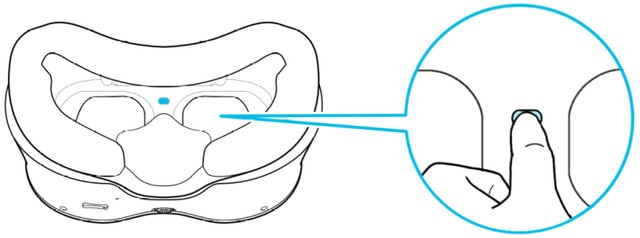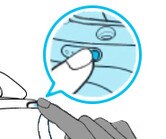-
简介
-
追踪模式
-
ArUco 标记和基于标记的追踪功能
-
基于标记的追踪功能
-
-
基于标记的位置共享设置
-
LBE 模式/LBE 混合模式设置
-
LBE 地图配置
-
基于标记的防漂移设置
-
基于标记的高级重新定位设置
-
基于标记的场景对齐设置
-
VR 模拟器模式设置
-
其他服务
-
更多功能
校准主头戴式设备上的摄像头
对于系统版本为 6.0.999.972 (FOTA 6.3) 或更早版本的 VIVE Focus 3 头戴式设备,需要通过 Android Debug Bridge (ADB) 工具执行摄像头校准。以下步骤介绍了如何使用 ADB 校准摄像头。
-
检查头戴式设备摄像头的校准状态。
- 开启电脑并打开 Windows 命令提示符。
-
将头戴式设备连接到电脑并将其启动。头戴式设备启动后,请立即在命令提示符中执行以下命令:
adb logcat | find "_calib_data.json"
如果头戴式设备摄像头已校准,将出现以下信息:
HD : HMD calibration file: /data/tracking_calib_data.json, size:
如果看到此信息,请跳至使用 VIVE Manager 创建地图并开始创建地图。
如果头戴式设备摄像头未校准,将出现以下信息:
HD : HMD calibration file: /mnt/vendor/mfg/Final_calib_data.json, size:
如果看到此信息,请继续执行以下步骤以校准头戴式设备摄像头。
- 在命令提示符中执行以下命令: adb logcat -s "LIVEK adsprpc"|findstr "LIVEK doLiveK"
-
用胶带遮住距离感应器,然后将头戴式设备朝外放在您面前。

站立不动,直到系统提示您开始摄像头校准。当系统准备好收集数据时,将出现以下信息:
[doLiveK] LIVEK prepare to collect data.Please use HMD look around.
-
慢慢移动头戴式设备以扫描环境。从上下移动开始,然后将头戴式设备转向不同方向。缓慢移动将提升数据收集率。
提示:
用头戴式设备绘制一个“8”字形以获得更好的结果。您也可以将头戴式设备倒置以扩大扫描范围。

随着更多动态动作,良好姿态的数量将增加。移动头戴式设备直到您看到 "good pose 600" 的信息:
[doLiveK] LIVEK good pose 100
[doLiveK] LIVEK good pose 200
[doLiveK] LIVEK good pose 300
…
[doLiveK] LIVEK good pose 600
-
继续移动头戴式设备直到收集到足够的数据进行校准。当您收集到足够的数据时,将出现以下信息:
[doLiveK] LIVEK pose enough.
注: 如果 "pose enough" 信息没有出现,请继续扫描直到其出现。 -
将头戴式设备放在一旁并按电源按钮两次将其置于待机模式。

头戴式设备将开始处理数据,这将需要大约两三分钟。数据处理完成后,将出现以下确认信息,表明校准成功:
[LIVEK] We use new extrinsic instead of original extrinsic.
注:如果信息 [doLiveK] LiveKUseTime tempLiveK LiveKPause exists, LiveK pause 在头戴式设备进入待机模式后出现,您需要重新启动头戴式设备以完成校准。
如果确认信息没有出现,则必须重新启动校准过程。
完成摄像头校准后,请将主 VIVE Focus 3 头戴式设备与 VIVE Manager 配对,然后创建虚拟地图。